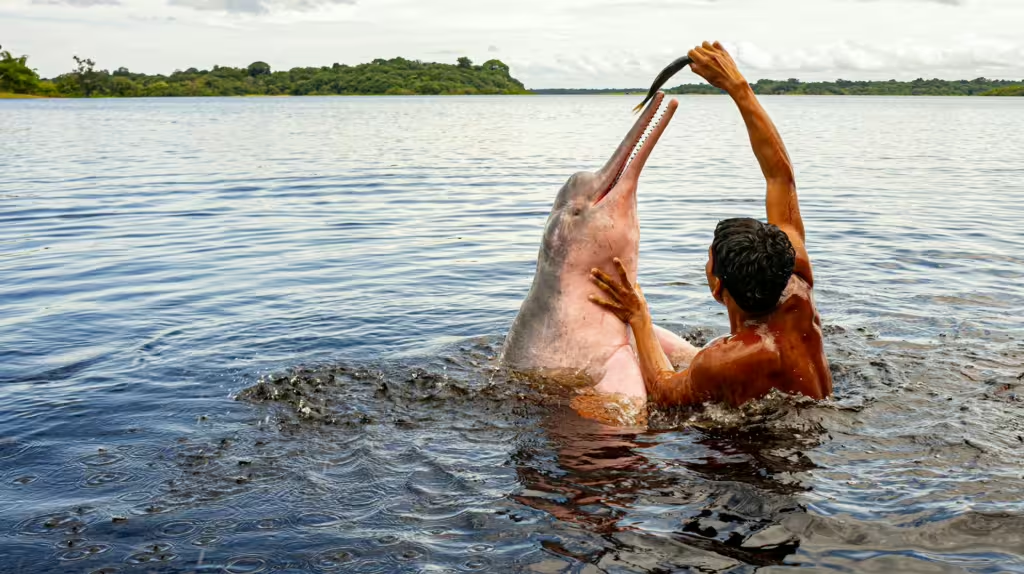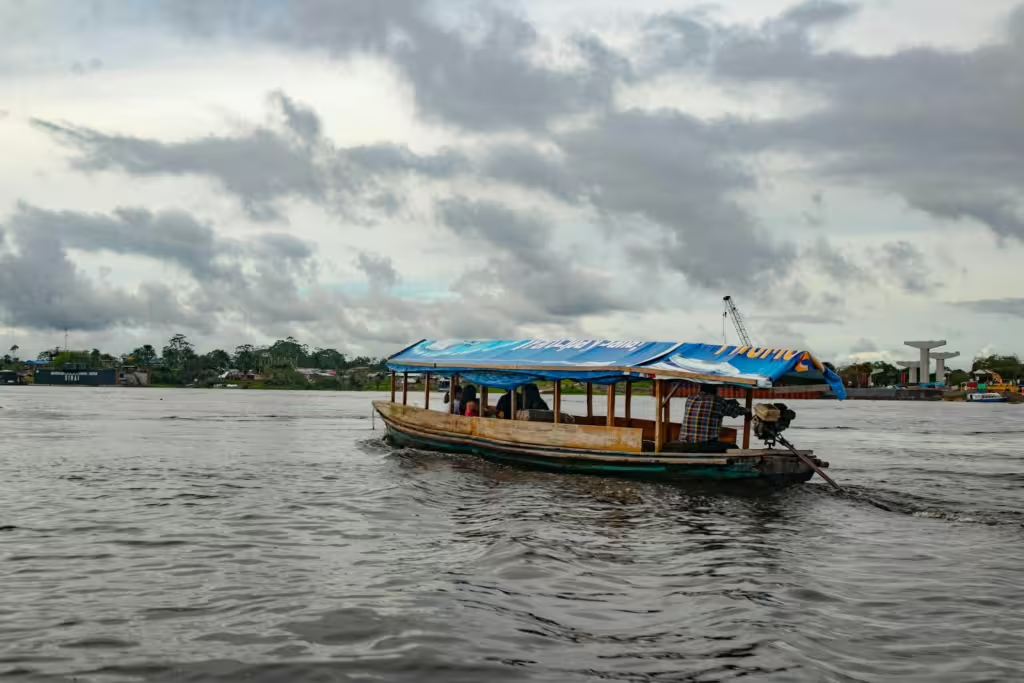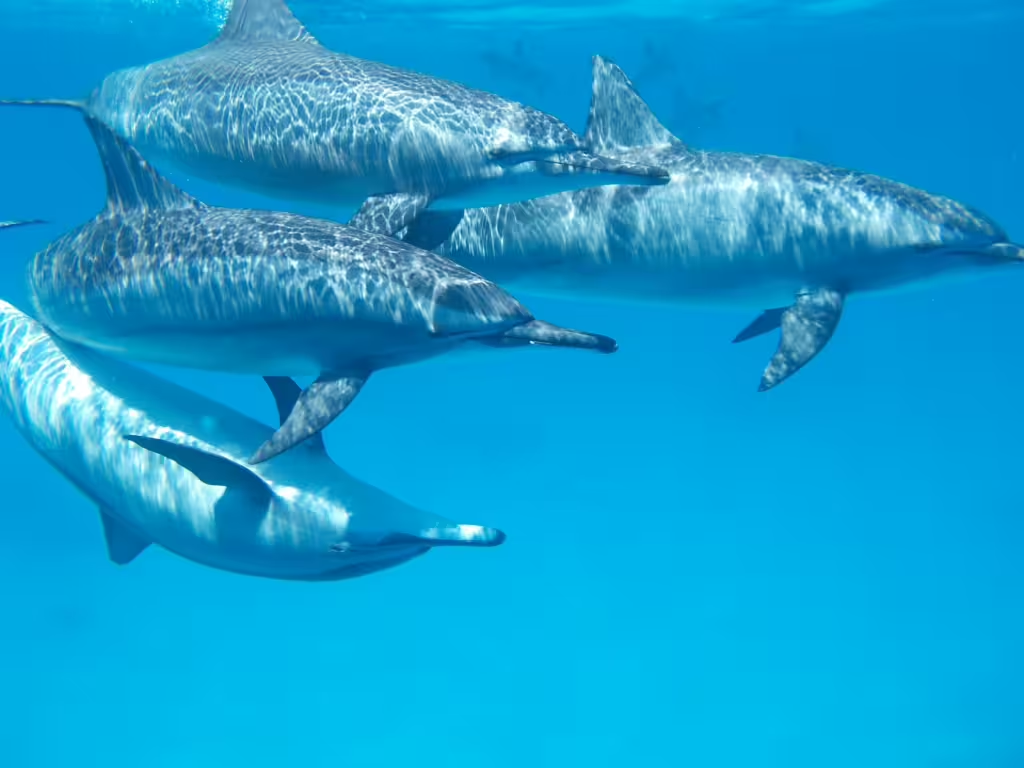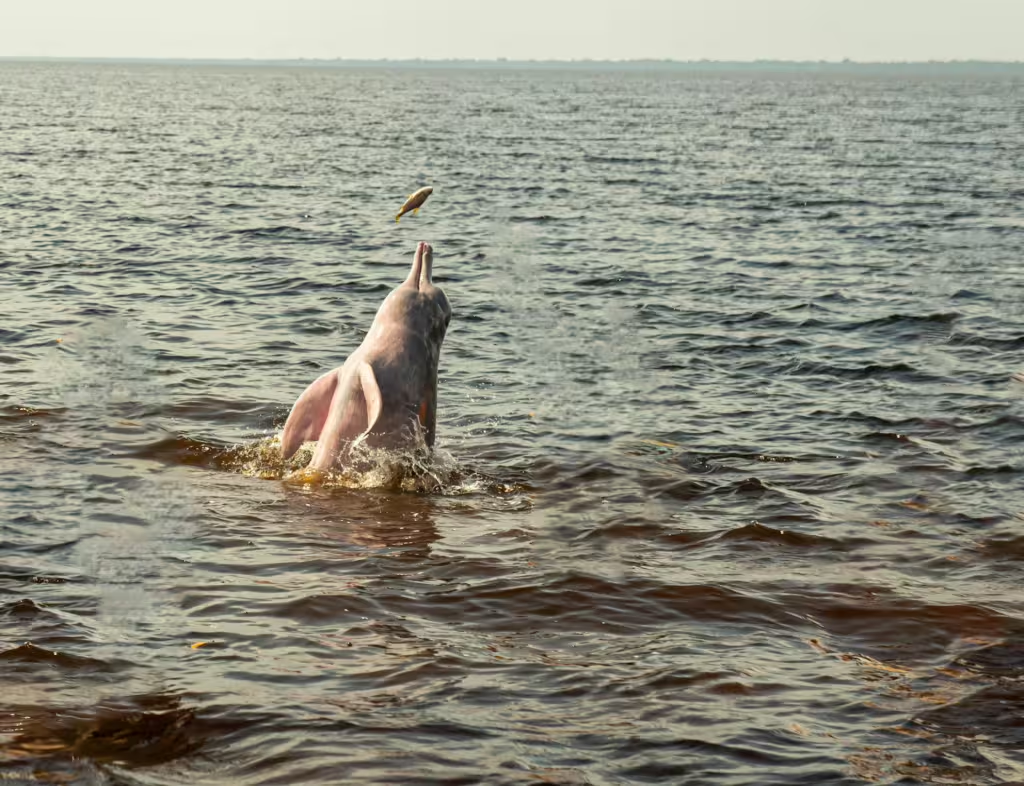In the heart of the Amazon Basin, where dense rainforest meets winding rivers, there lives a fascinating creature. This animal was once believed to be the stuff of legends, sailors, conquistadors, and Native Americans all believed them to be something supernatural, but the boto, or pink river dolphin, is all too real; and all too fascinating.
These amazing mammals have captivated scientists, locals, and nature enthusiasts alike for centuries. To this day, they remain one of the most unique and enigmatic inhabitants of the world’s largest tropical rainforest. They are distantly related to the dolphins of the greater marine ecosystem, but their striking pink coloration, distinct morphology, and mysterious behavior set them apart.
As we mentioned earlier, this freshwater dolphin holds a special place in Amazonian folklore as well scientific research, which are two facets of its existence that we will touch on in the ensuing article. In addition, this article will delve into the many mysteries that surround these aquatic mammals. We will explore their biology, behavior, and the challenges that they face in an ever-changing, rapidly-dwindling environment.
A Distinctive Appearance
As you can probably see from the image above, the Amazon pink dolphin is quite an unusual-looking animal. It stands out due to its unusual color, which ranges from light gray to vibrant pink depending on the light, the specimen, and their diet. Unlike their marine cousins, these dolphins have flexible necks, which allow them to maneuver effortlessly through the complex underwater terrain of the heavily flooded forests that make up their homes in the Amazon River Basin.
These animals also exhibit some degree of differentiation in color between males and females. For example, adult male river dolphins are typically more pink than females. The belief is that this coloration results from scar tissue the dolphins get through social interactions or battles. This striking color has earned them the nickname “Pink Jewels of the Amazon.”
Like bottlenose dolphins and other such small, swift whale cousins, the somewhat lumpy bodies of the pink river dolphin are quite streamlined and therefore well-adapted to their freshwater environment. Most specimens can measure up to eight feet in length and weigh as much as 400 pounds, making them among the largest river dolphins in the world. Their long snouts are equipped with up to 100 conical teeth, which enables them to hunt and easily capture a diverse array of fish, crustaceans, and even small turtles when the mood suits them.
The Science Behind the Pink
You might be asking yourself, why are the dolphins pink? Well, scientists. believe that the vibrant pink hue of the boto is influenced by a number of different factors. These factors include, but are not limited to: blood vessel density near the skin’s surface, environmental conditions, wounds from altercations, and even emotional states like excitement or stress. Some males might even get pinker when displaying diminance or aggression. Regardless of why, there is no denying the pinkness is this dolphin’s most distinguishing and intriguing features. Interestingly enough, juvenile river dolphins are typically gray, like their oceanic cousins, and the pink coloration develops as they age.
Habitat and Adaptations
Pink dolphins don’t only inhabit the vast river systems of the Amazon and Orinoco basins, they have also been known to swim farther out to see when the need arises. These marine mammals thrive in both clear and murky waters and their expansive habitat expands even more during the rainy season. During these times of deluge, rivers flood surrounding forests, creating a veritable labyrinth of submerged trees and vegetation. It is in this difficult and dangerous environment where the amazing agility and echolocation skills of the pink dolphin come in most handy. These skills are vital for hunting and navigation.
Indeed, one of the most specialized adaptations of the pink river dolphin is its unfused cervical vertebrae, granting it an extraordinary range of neck movement. This neck flexibility enables them to weave around obstacles and access prey in the dense underwater forests they sometimes find themselves in. Additionally, their echolocation, which is basically a biological sonar system, is also highly developed. By using this skill, underwater, they are better able to detect objects and prey in the low-visibility waters of the Amazon.
Social Behavior and Communication
Pink river dolphins, like other dolphins, exhibit fascinating social behaviors. The thing is, their behaviors are quite different than those of their marine counterparts, and that set them apart. Unlike marine dolphins that live in large pods, rive dolphins tend to be solitary creatures. If they are in groups, they are usually small, containing between two and four individuals. This behavior is likely to be the direct result of the challenging and dynamic environment of the Amazon River. U
The botos’ smaller group sizes allow them to navigate the labyrinthine waterways and flooded forests of their habitat with greater ease. That said, even pink river dolphins are not above the odd family reunion when the waters run high and the food is swimmin’. When the river expands into the forest, river dolphins sometimes gather in larger groups, particularly in areas where the fish is plentiful.
Despite their often solitary nature, pink dolphins are just as playful, intelligent, and curious as other dolphins. Such traits that have endeared them to local communities and visitors alike. These animals are so curious, in fact, that even today they are known to approach boats and interact with humans. The dolphins have even been known to engage in playful antics like tossing sticks or chasing after one other.
Communication is the cornerstone of many social hierarchies among animals. Pink dolphins are no different, and their behavior, as well as their vocal repertoire, is both diverse and intricate. These dolphins possess a wide array of clicks, whistles, and pulsed calls that help them to navigate murky waters, locate prey, and communicate with other dolphins. These sounds are produced by way of specialized structures in the dolphins’ nasal passages, similar to echolocation in bats. The clicks are particularly helpful, because they are used to help them detect objects in their murky environment. The louder whistles, on the other hand, may play a more significant role in social bonding and coordination.
Recent studies suggest that the vocalizations of pink dolphins and indeed, dolphins at large, are more sophisticated than we previously believed. These calls, bells, whistles, and clicks are nuanced means of engaging in routine social interactions and possibly even individual identification.

Legends and Folklore
We mentioned earlier how the boto occupies a special place in the folklore and spiritual traditions of Amazonian communities. These stories, which have been passed down through generations, paint the pink river dolphin as a creature of mystery and magic, deeply connected to the river’s essence. As a result, the dolphins are also inexorably interwoven into the lives of those who dwell along the river’s banks.
One of the most enduring legends about the boto portrays the pink dolphin as a shape-shifter. According to these tales, the boto can transform into a handsome, elegantly dressed man. This man generally shows up during village festivals or celebrations, where he charms and seduces young women. At dawn, with his seductions complete, he disappears, returning to the river’s depths. Some stories even claim that children born with fair skin or exceptional abilities are the results of these Zeus-like escapades; that these children were fathered by the boto himself. While fantastical, these narratives highlight the respect and awe that local people have for these enigmatic creatures.
In other tales, specifically mythological ones, the boto is often regarded as a guardian of the river and its spirits. Many Amazonian communities still believe that harming a pink dolphin brings bad luck or even a curse. As a result, these animals are generally safe from human hunters by means of a cultural taboo that prohibits hunting or injuring them in any way. This belief and practice has historically protected the dolphins for countless centuries, and is believed to be an early form of unintended ecological conservation.
Pink dolphins are protectors not only of the river itself, but those who make their living upon it. Botos are believed to use their supernatural abilities to guide lost fishermen back to safety or to bring an actual fortune to those who treat them with kindness. There are many who view the boto as a mediator between humans and the aquatic world, a bridge connecting the seen and unseen realms of the Amazon. In short, these creatures are absolute legends!
Threats and Conservation Challenges
Despite their cultural importance and all the protection these animals have had for the past several hundred years, pink dolphins still face numerous threats from human beings. Habitat destruction from deforestation, dam construction, and mining activities cause constant disruption to their environment. In addition, pollution from agricultural runoff and industrial waste introduce harmful chemicals into the Amazon river, affecting their health and that of their food sources.
Climate change is another in a long list of threats that can damage the ecosystem these marine mammals depend upon for survival. This ever-present threat adds another layer of complexity, altering rainfall patterns and water levels in the Amazon. These changes have already begun to affect the availability of prey and the dolphins’ ability to navigate their habitat. There is also the increased risk to injury that is posed by boat traffic.
Speaking of boats, one of the most pressing threats to the boto’s continued existence is the practice of using pink dolphins as bait in the piracatinga fishery. The piracatinga, a scavenger fish, is highly sought after in certain markets, and wouldn’t you know it, dolphin meat is apparently an effective bait. This sad practice has led to significant declines in dolphin populations in some areas of the Amazon.

Conservation Efforts
The pink river dolphin, a symbol of the Amazon’s biodiversity, and though it faces significant challenges from habitat degradation, pollution, and human activities, conservationists are working hard to protect it. That’s a good thing, because these conservation initiatives are vital to ensuring its survival and the health of its entire ecosystem.
Education and awareness has become a key part of ensuring these efforts continue to be effective. Community outreach programs aim to inform local populations about the ecological importance of pink river dolphins and the threats they face, while also bringing to life the many legends and folklore that surround the boto. Perhaps most importantly of all, these programs often emphasize sustainable fishing practices, responsible waste disposal, and the value of preserving the Amazon’s unique biodiversity.
Now, enforcing fishing regulations is another story. Though it is a critical aspect of conservation, accidental entanglement in fishing gear and deliberate hunting for bait continues to threaten pink dolphin populations. Governments and conservation groups have already begun working together to implement stricter controls on harmful practices and to promote alternative methods for fishing, but progress, as always, is slow; perhaps too slow for the dolphins.
Despite all the hangups and difficulties, ecotourism has emerged as a powerful tool in pink dolphin conservation. Each year, thousands of tourists flock to the Amazon to witness these extraordinary creatures in their natural habitat. Not only do these lookie-loos provide excellent economic incentives for local communities to protect their dolphin neighbors, they help bring that knowledge home, so that others can learn about these incredible mammals.

Why Protect the Pink Dolphins?
The truth is, the pink dolphin is more than just an emblem of Amazon culture and religion; it is a keystone species for its entire ecosystem. Whales generally play this role wherever they are found and are crucial in maintaining the health of their respective ecosystem; pink river dolphins are no different. As top predators, these animals help regulate fish populations, ensuring a balanced food web. That’s why protecting pink dolphins means safeguarding the intricate web of life that exists in the highy-specialized environment that is the Amazon Basin.
True Investigator Says…
As you can see, the pink river dolphins of the Amazon aren’t just a mythological wonder of the ancient world, they are a modern mammalian marvel! These creatures are a testament to the wonders of nature and the interconnectedness that exists between natural ecosystems and the cultures that grow up in their shadow. Their vibrant color and mysterious behavior captivate all who encounter them and despite the threats that continue to assail them, people are doing their best to continue to protect them. And now thaty you know about them too, you should endeavor to do the same!
Discover more from TrueInvestigator
Subscribe to get the latest posts sent to your email.


